
om Watson phoned Prestwick Golf Club to ask for a Saturday morning tee time. Ever since Old Tom Morris was the founding professional at Prestwick, Saturday mornings have been for members only, as the bartender knew all too well when she took Watson’s call in 1981.
Watson was the reigning Open champion and a winner of five major titles by this point and so hoped his name might help. “I don’t care if you’re Sherlock Holmes,” she replied. “You can’t play on a Saturday.”
Watson called the pro shop and longstanding pro Frank Rennie—now retired and a member at Prestwick—found him a game. The American guest soon learned that lunch at Prestwick is as important as golf. Years later Watson would admit it was “a rather long and very unsobering lunch.”
“They had a good lunch and enjoyed some typical Prestwick hospitality, which can get quite dangerous if the members get hold of you,” starts Ken Goodwin, club secretary at Prestwick GC. “Watson was introduced to the delights of Kummel and the story goes that he couldn’t remember playing the first six holes at Troon in the afternoon, yet apparently he played them quite well.”
Despite the fact Watson had won The Open three times in the previous six years, he only really started to appreciate links golf on this tour he made 40 years ago with old friend Sandy Tatum, a former president of the USGA. They started at Ballybunion on Ireland’s west coast, then came to Prestwick before heading to neighboring Royal Troon, and then up to the Scottish Highlands to Royal Dornoch.
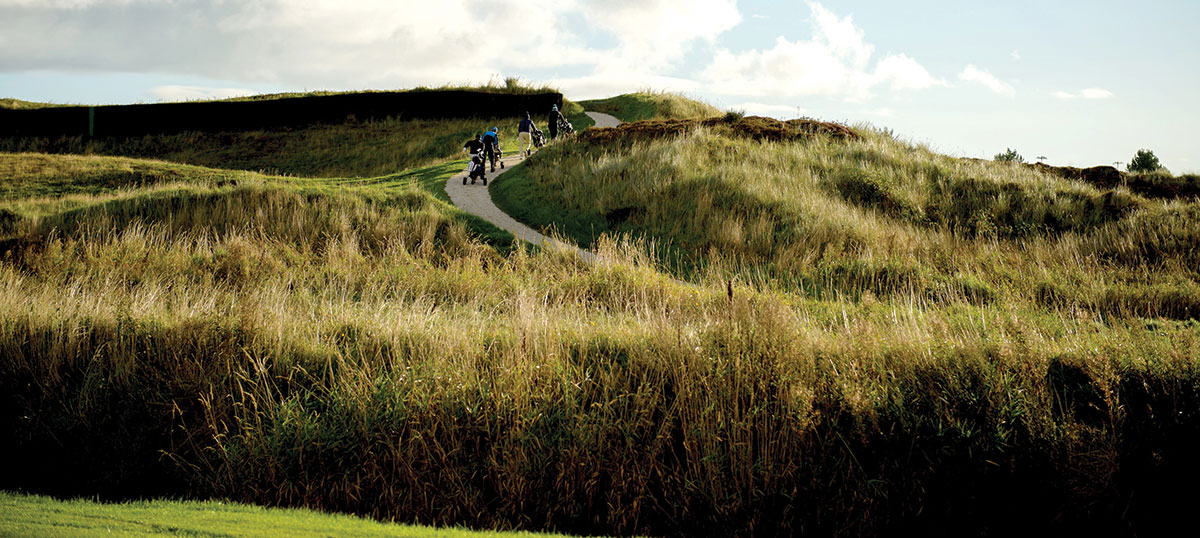
Champion golfer required
Famed for its history and its lunch, we went to Scotland’s west coast to discover the club where golf’s oldest major began.
Like many great epics of the 19th century, this one begins with a death, to Allan Robertson of St Andrews, a golfer so highly regarded they simply called him “The Champion Golfer.” Robertson died on September 1, 1859 at the age of 43, and so the question was: who would become the next Champion Golfer?
Morris learned his trade under Robertson at the Home of Golf, as a ballmaker, clubmaker and competitor—they say Robertson and Morris were undefeated as a pair—before Morris was lured to Prestwick in 1851 to lay out and maintain a new golf course, and to serve the new club’s members.
Prestwick’s members were keen to establish their man Morris as the new “Champion Golfer,” so they commissioned the Challenge Belt and organized the inaugural Open. Only eight entrants competed for the belt on Wednesday, October 17, 1860, playing three rounds on Prestwick’s 12-hole course in one day. Willie Park Snr from Musselburgh, a lifelong rival to Morris, beat the local favorite by two shots.
The Open tradition had begun—and Morris soon would wrap the Challenge Belt around his waist, winning his first of four in 1861. Of the 149 Opens played to date, the first 12 were at Prestwick, and another dozen were staged on the Ayrshire links once a rotation of Open venues was established, with Prestwick’s last Open held in 1925.
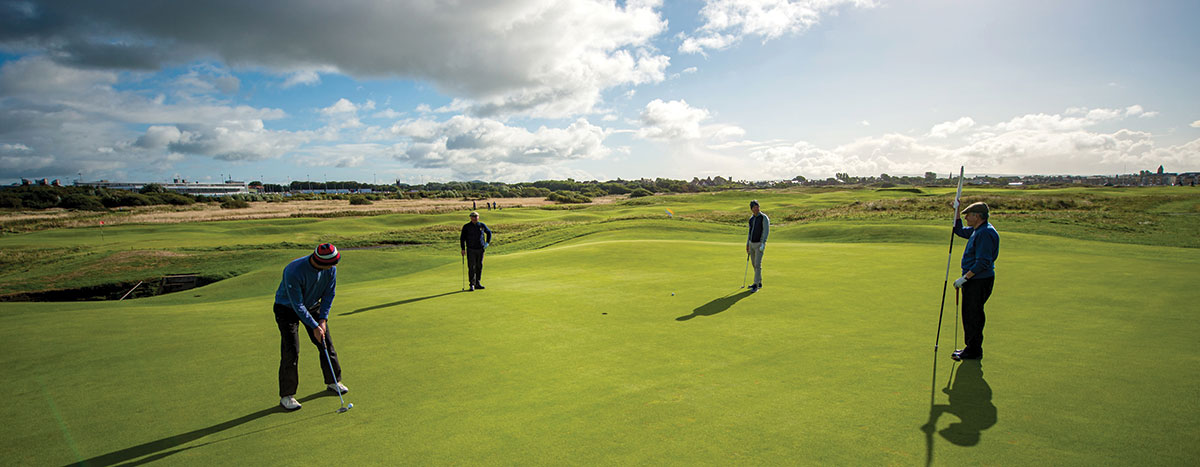
The original 12-hole route was extended to 18 holes in the 1880s—laid out by Morris and his successor as professional at Prestwick, Charlie Hunter—and while the course lacks the acreage and length to host a modern professional championship at 6,908 yards from the back tees, it remains a haven to how the game was once played.
“We say that golfers from the United States should start at Prestwick when they come to Scotland,” starts Rennie, pro at Prestwick from 1962 to 2004, as he enjoys a post-round pot of tea in the cards room. “At Prestwick they can discover the way golf used to be played. It’s not a long course and we have small greens.”
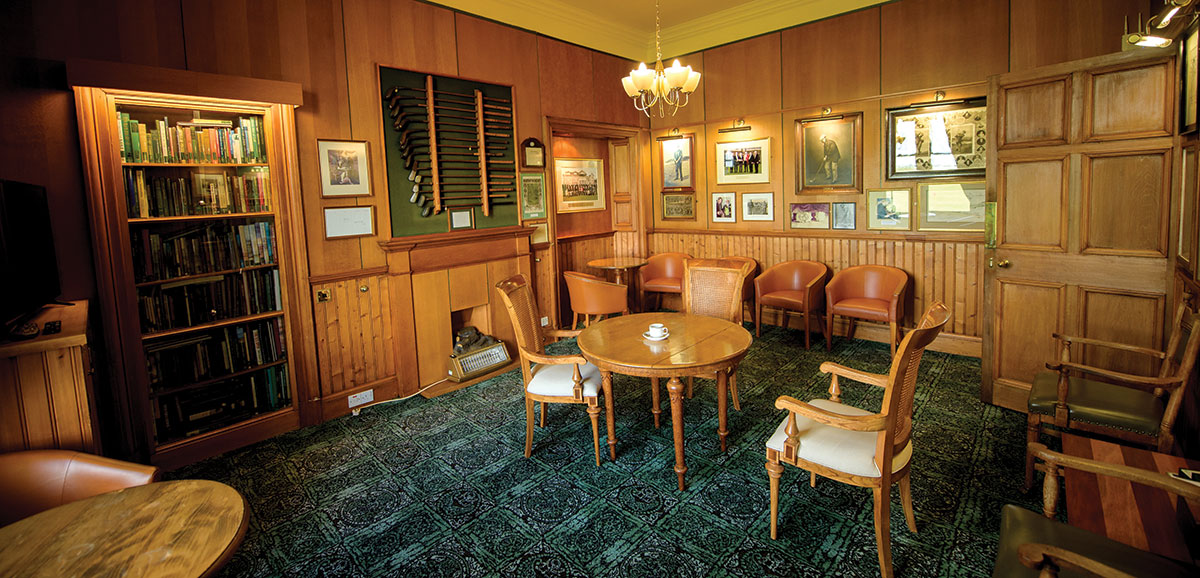
There is also a small stone wall that interferes with a golfer’s equilibrium on the first tee, to separate the first hole from the Glasgow to Ayr railway line.
To say the first at Prestwick has a righthand side is exaggerating to be truthful, and the low wall maintains its stubborn line all the way up to the greenside, before the second hole mercifully veers away. The railway trundles up past Troon and is particularly visible from the 11th hole at Royal Troon although not in quite such an intrusive manner. Like the first at Prestwick, the 11th at Troon is called “Railway” in that classicly blunt, matter-of-fact Scottish way. Just say it as you see it, laddie.
And so the tone for a round of golf at Prestwick is set. They wouldn’t lay out a modern golf course this way—and that, truthfully, is both the charm and the challenge of this storied links. Some holes can be sincerely confusing to the newcomer, such as the par-five third hole, Cardinal, which follows the Pow Burn while golfers negotiate the vast Cardinal bunker and its uncompromising ramparts of railway sleepers.
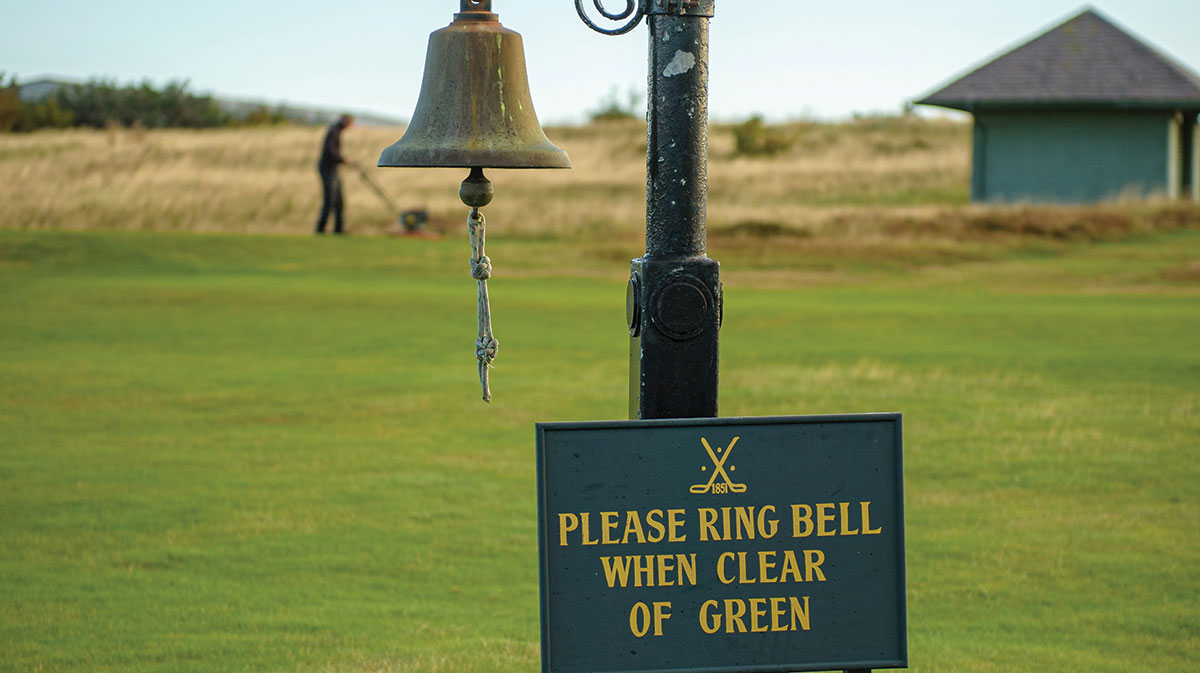
Adds Goodwin: “I warn visitors who don’t know the course that when they stand on a tee, if they can see a flag ahead they are probably not facing in the right direction.”
This historic golf course boasts eccentricities by modern standards, but when Old Tom Morris came here in 1851 to lay out the course, he set the standard for the design of links courses for generations to come.
“Prestwick was the first course Tom laid out, and his approach to golf course design was to first find a good place for a green,” adds Goodwin. “Once he had identified that, he would find another good place for a green, and so it went on. If there happened to be a sand dune or a depression on the road to the green then it was up to the golfer to negotiate it, one way or another.”
So to the mighty 206-yard, par-three fifth hole, ‘Himalayas’, which requires a blind tee shot over an imposing dune. On exiting the green, golfers must ring the bell to let the group behind know they can tee off.
“Himalayas has a big sand dune between the tee and the green,” explains Goodwin. “You would never be allowed to build that hole today. Pros today would hate it in a tournament, but golf in the early days was all about negotiating obstacles like on our fifth hole.”
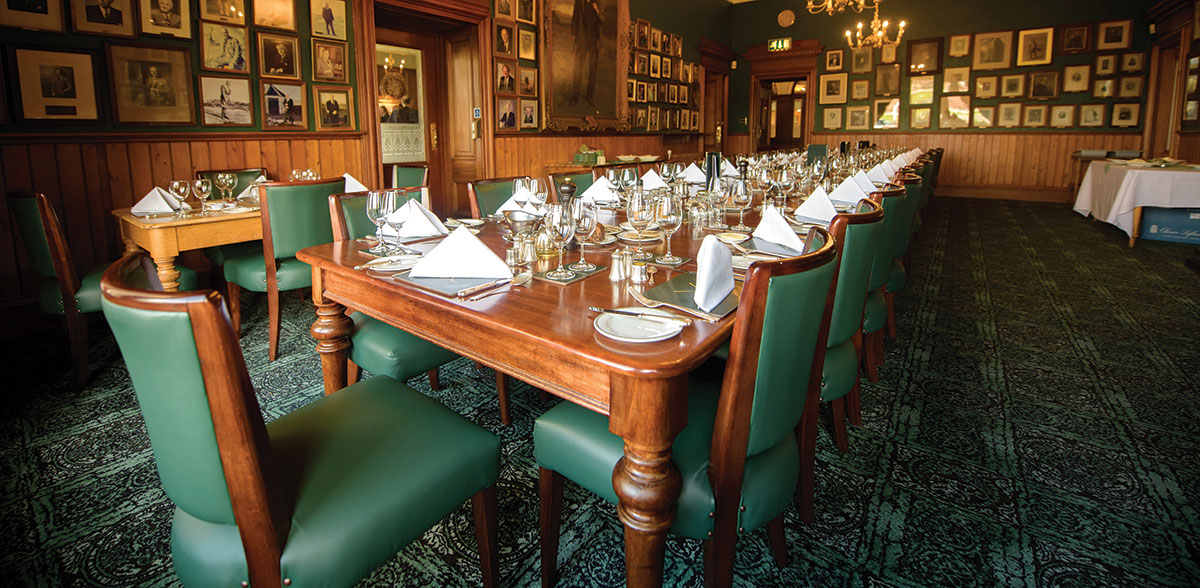
Long table, long lunch
Many of the members welcome the abbreviated challenge
of the closing hole—named “Clock,” and the clubhouse clock is the target line from the tee—as the clock reminds them that waiting inside is a drink in the Smoke Room, lunch in the Dining Room and then, as long as schedules have been properly arranged, probably another drink in the Smoke Room.
Jacket and tie are required in the Smoke Room and Dining Room but don’t jump to the wrong conclusion about it being formal. Members and visitors alike have dined at the single, long dining room table at Prestwick since the 1880s—maximum capacity for one sitting: 32—and when you walk into the dining room you don’t know who you are going to sit next to. ’Twas ever thus.
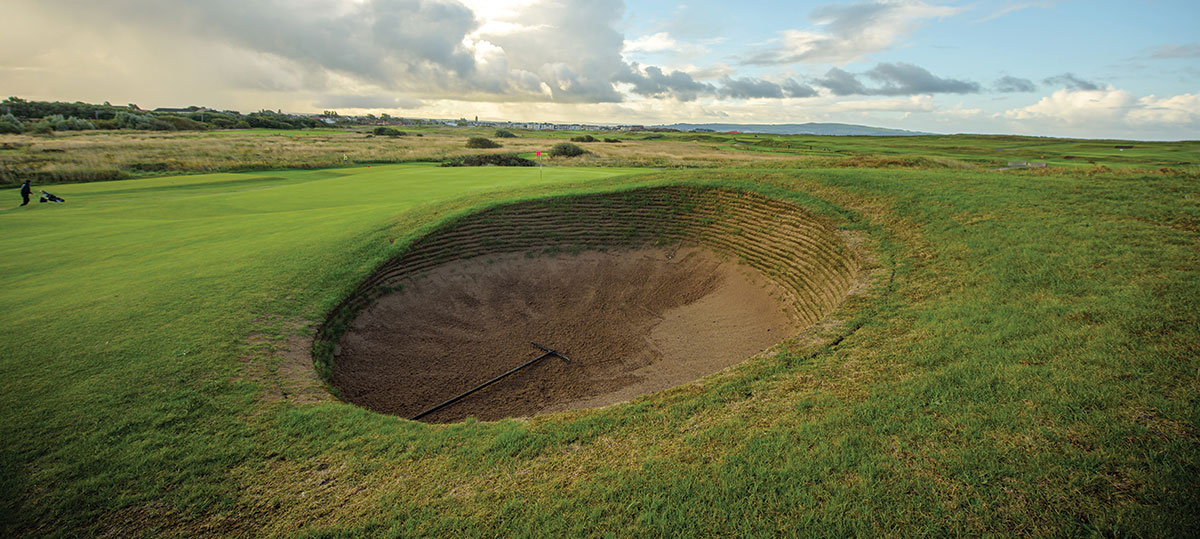
“This is a very welcoming club,” says Goodwin. “If visitors are having lunch in the dining room our members will join them and ask them where they are from. The dining room layout is a great way of mixing people up on the one long table.”
Then comes the Kummel, or the “putting mixture” as is it sometimes known. A rich, caraway seed-based digestive served neat or on ice, Kummel emerged in the mid-19th century from Riga in Latvia, on the shores of the Baltic Sea, and became popular as an after-dinner drink in the gentleman’s clubs of the UK. Kummel is not widely enjoyed in Britain these days, with its strong flavors of aniseed and liquorice, and it is heavily loaded with alcohol. Sometimes taken with coffee, Kummel brings warmth to the Smoke Room as a bracing Scottish afternoon recedes into the twilight.

“It seems that we have embraced Kummel more than most,” admits Goodwin. “It has been said that at one time, a third of all Kummel drunk in Scotland was drunk at Prestwick Golf Club. It is still very popular.”
Try it chilled and the bartenders at Prestwick will fill a shot glass to the brim. Sometimes it might spill on your fingers, hence its other nickname, a “Sticky.” Traditionally, golfers don’t wash off the stickiness if they are playing an afternoon round as it helps to grip.
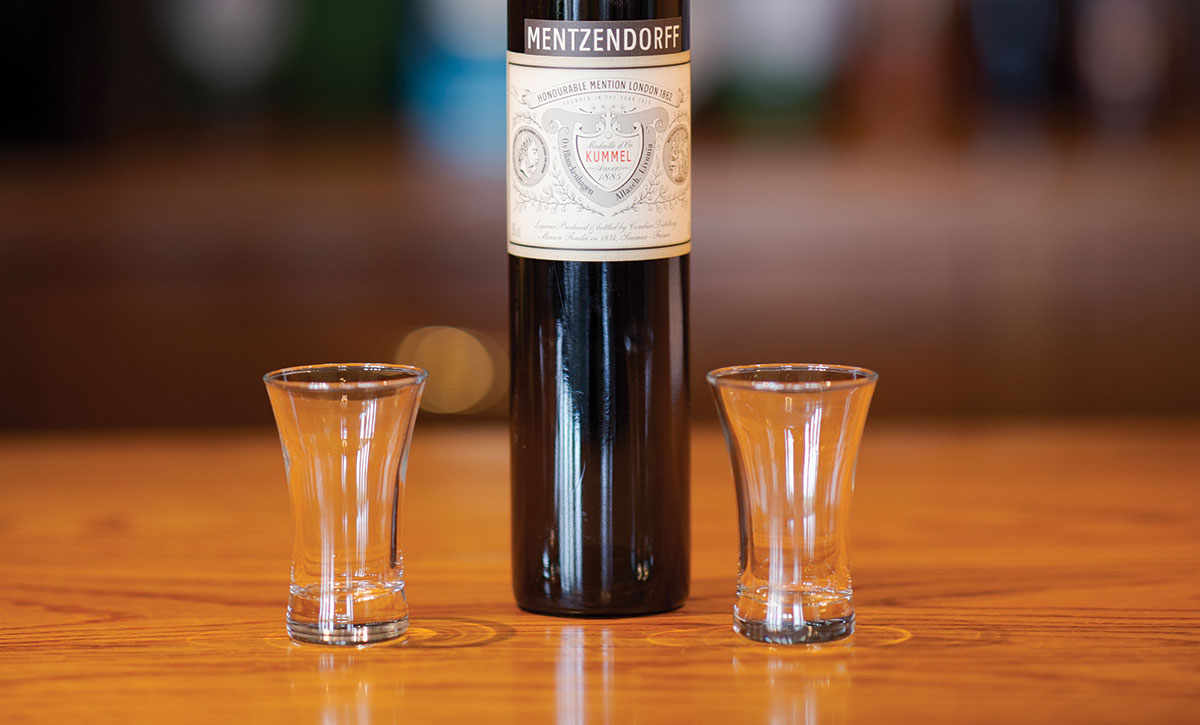
Tom Watson thought it was a growing appreciation of the classic links that enabled him to play so well after lunch that afternoon in ’81. Whether it was that or the Sticky, it comes down to Prestwick—where the majors began.
Follow Us On


| Cookie | Duration | Description |
|---|---|---|
| cookielawinfo-checkbox-analytics | 11 months | This cookie is set by GDPR Cookie Consent plugin. The cookie is used to store the user consent for the cookies in the category "Analytics". |
| cookielawinfo-checkbox-functional | 11 months | The cookie is set by GDPR cookie consent to record the user consent for the cookies in the category "Functional". |
| cookielawinfo-checkbox-necessary | 11 months | This cookie is set by GDPR Cookie Consent plugin. The cookies is used to store the user consent for the cookies in the category "Necessary". |
| cookielawinfo-checkbox-others | 11 months | This cookie is set by GDPR Cookie Consent plugin. The cookie is used to store the user consent for the cookies in the category "Other. |
| cookielawinfo-checkbox-performance | 11 months | This cookie is set by GDPR Cookie Consent plugin. The cookie is used to store the user consent for the cookies in the category "Performance". |
| viewed_cookie_policy | 11 months | The cookie is set by the GDPR Cookie Consent plugin and is used to store whether or not user has consented to the use of cookies. It does not store any personal data. |